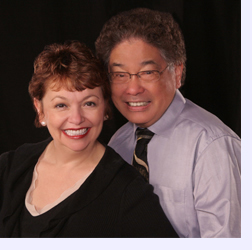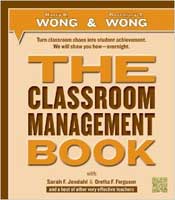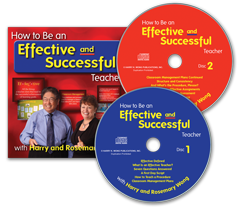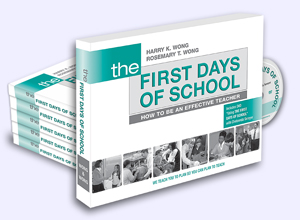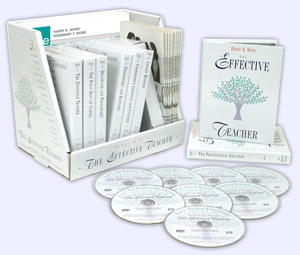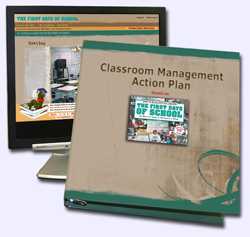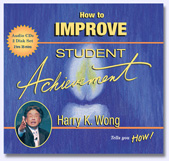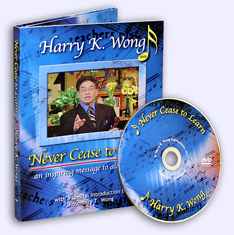|
 |

Special to the Gazette
May 2011
The Inspiration of a Mother
Andrew Miller Unable to Learn When Andrew Miller was in the second grade, he was diagnosed with Dyslexia, Dysgraphia, and ADHD. The Intervention Specialist told Andrew’s parents that he would be lucky to bring home anything higher than a C. He also said Andrew had little to no chance of attending a four year college or university. Andrew was considered a slow-learner and “one of those kids who were unable to learn” for most of his elementary schooling. Andrew’s mother, however, refused to believe it. “My mother,” Andrew says, “had positive expectations for me to succeed.” Despite what the Intervention Specialist had said, she encouraged Andrew to bring home only As and Bs. She would sit down with Andrew and teach him how to edit his papers. She helped him with his homework every night. Andrew always felt like he had a lot of support at home. Andrew’s learning took off in his freshman year of high school. He graduated his senior year number one in his Teaching in Technology program and number two in the school. He went on to study at a four year college, where his mother continued to support his educational endeavors. Working with Special Needs Andrew is now an Intervention Specialist and Special Education teacher in the Cincinnati Public Schools, where he works in an inclusive high school setting. Having grown up a special needs student himself, he understands that structure and procedures are very important, if not more important, for students who have special needs.
Generations of Teachers Shannon Dipple, a second grade teacher in Kettering, Ohio, comes from a long line of educators.
Says Shannon, “I try to emulate my mother in how I treat my students and my own children. I watched my mother ‘teaching’ my boys. She would read to them like she did with me, play games with them, talk to them, be firm with them when necessary, and they always knew her expectations of them. Isn’t that what we want for our students?” Shannon’s story begins back in the early 1900s, when her great-grandmother, Georgia Easterling, taught in a one-room school house in South Carolina. At a time when it was illegal for African American children to go to school with white children, Georgia Easterling dedicated herself to teaching students of all races. During the day, she would teach in the school house. At night, she invited African American children into her home to learn. Shannon says, “Both she and my great-grandfather were known for being compassionate and highly regarded citizens. They both refused to give in to prejudices and believed in the equality of all people.” This was the beginning of a set of core values and beliefs that would be passed down through generations of teachers. Belief #1 This value was passed down to Shannon’s grandmother, Bessie Easterling. Gentle, Yet Firm Grandparents Shannon describes her grandmother as “a very quiet woman who had great internal strength of character.” Bessie Easterling married a principal, James Clement Sweet, and moved to North Carolina, where she taught her daughter, Maggie, Shannon’s mother. Shannon’s mother tells stories of going to school with her parents. She remembers her mother treating her no differently than the other students—it was always fair—and she was a very loving teacher. Shannon knows from the stories that her grandmother took great pride in her students’ achievements and had a deep desire to see them learn. Of her grandfather, Shannon describes how he ran the school with a gentle, yet firm, hand. “Nobody wanted to get into trouble with Mr. Sweet because they did not want to disappoint him,” says Shannon. “It wasn’t that they were afraid of him—on the contrary, they loved him so much.” Belief #2 Continuing the Legacy After growing up attending her parents’ school, Shannon’s mother, Maggie, was also inspired to become a teacher. Though she quit teaching to raise Shannon and her brother, Maggie embraced the same core values as she taught her children. Shannon has fond memories of her mother teaching her to read. Her mother never forced her to read. Instead, she taught Shannon to love reading. She took her to the library. She read out loud to her for hours. She encouraged her to write stories, and listened to them “as if I were a best-selling author.” Thanks to her mother, Shannon began Kindergarten reading at a second grade level. Belief #3 Shannon says, “When I have a poor reader in my classroom, the first thing I do is make sure that child gets lots of ‘lap time’ every day. This is simply my way of referring to being sure a child is immersed in listening to stories.” Shannon reads aloud to these students at least twice a day. She encourages them to listen to stories on tape, CDs, mp3s, or the computer. She pairs them with an older reading buddy who reads to them every day. She refuses to use “drill and kill” with these children. She wants them to love listening to stories so much that they want to start learning to read by themselves. The human brain reacts to emotions, either positive or negative. When reading becomes a pleasurable activity, children will want to start and try by themselves. Her mother also taught her many other lessons. Shannon says, “My mother also never gave up on me, and I certainly put her through the wringer as a teenager.” Shannon was a gifted student who became bored with school. She had very poor grades and graduated with a barely passing GPA because she had to maintain it in order to stay on the cheerleading squad. “But my mother never criticized me,” says Shannon. “She tried to redirect me, present options, and encouraged me to work up to my potential.” Belief #4 In college, Shannon began to succeed. Her grades improved. Her problem now was that she had no goal. She was wandering aimlessly. When she reached her final year of college without enough credits in any one area to get a degree, her mother put her foot down. There would be no fifth year of college. Shannon had to graduate now. Shannon’s mother suggested teaching. Shannon questioned the career path at first, but soon she fell in love with it. Belief #5 Shannon’s Classroom Procedures “I didn’t know it at the time, but those values and beliefs that were passed down to me, that I had heard about through stories . . . those beliefs set the stage for how I teach,” says Shannon. Using these five core beliefs as a guide, Shannon has created several procedures in her classroom. These allow her classroom to run efficiently, free from chaos, and give her the freedom to produce results. “Every moment counts,” says Shannon, “so every moment is defined by a procedure.” From the second students walk into the room, they have tasks to accomplish. They unpack their bags, turn in homework, sign up for lunch, turn in Teacher Mail, sharpen their pencils, and get straight to reading. These procedures have been taught, modeled, and practiced so that every morning, these tasks are completed within the first two minutes. “From the moment students walk through the door, they know I expect results. More importantly, they know what results I want because I have left nothing to chance. They have been taught how to work towards my expectations,” says Shannon. Shannon begins every Math lesson the same way. Students work independently to solve three review questions in their math journals. They then move on to complete a short facts review. Students who finish early can work on a challenge problem. There is no wasted time in Shannon’s classroom. After five minutes, Shannon leads the class through the review questions together. She finishes the daily routine with two mental math problems and a one minute timed test. This fifteen minute routine is the same every single day. Shannon says, “My students know what to do and how to get results, and so do I. Their high math achievement scores show this.” Shannon’s results are not limited to math. Last year, her lowest performing student showed a year and a half’s improvement in reading literacy on his DIBELS test. Shannon says, “I often get the children (or parents) nobody else wants because my principal knows they will succeed in my room. Why do they succeed? My classroom management plan does not allow for failure. It is not just a plan for children managing themselves, but the way I manage my own teaching.” Continuing the Legacy In 2009, Shannon began Primary Education Oasis, a website where she shares her knowledge and experience from almost twenty years of teaching in the states and abroad. The website provides resources that work. By sharing this, Shannon hopes that teachers will be inspired and motivated to rethink some of their classroom practices. Shannon wants especially to help new teachers get up to speed quickly. She remembers her struggles in her first years of teaching. She hopes her website will allow new teachers to easily grasp the research in education and become better teachers. Primary Education Oasis is geared towards improving teachers. By providing proven teaching strategies and methods, Shannon works to improve student achievement by improving the quality of the teaching. “I feel strongly that absolutely no program will save your students. It is the quality of the teacher that makes the difference,” says Shannon. In Loving Memory Early one Friday morning in 2007, Shannon’s father telephoned as she was preparing to leave for school. It’s the phone call we all fear could happen to us one day. Her father called to say her mother had gone to bed the night before and just never woke up. Life stopped for Shannon that day. “When she died, I lost the most loving, caring person I had ever known,” says Shannon. “She isn’t really gone,” suggests Shannon. “Often I have reflected on why I am a teacher, how I can be better, and how I can be a mother like she was. I realize that those core values, those beliefs—what she taught me through sharing about our family, showed me in her parenting, and guided me with continual encouragement—that is what shapes who I am and what I believe about all kids.” Shannon’s Beliefs About Kids
A Post Script One of the procedures we use in writing these t.net columns is sending a draft of the article to the people featured and asking them to review it for accuracy of their ideas. Along with the comments we received from Andrew, he shared his amazement at the wealth of resources he discovered on Shannon’s website. Next year he will be teaching 1st and 3rd graders with severe behavior difficulties and emotional disabilities. He said there is so much to “beg, borrow, and steal” from Shannon’s website. Andrew was so inspired by the words that Shannon had for her family he made a request for us to add a P.S. to the article if appropriate. His request was simple—add a picture of his mom and his words to her.
This is an article about the power of convictions, positive expectations, belief, and love. It’s what we hold in our hearts as parents and teachers for our children. It’s knowing that one day, the world will shine brighter because we made a difference in someone’s life.
|
||||||||||||||||||||||||
| ||||||||||||||||||||||||

 “With the support of my family, I now have the knowledge to change lives and help others, with similar disabilities as my own, realize and live their dreams . . . like I am right now!”
“With the support of my family, I now have the knowledge to change lives and help others, with similar disabilities as my own, realize and live their dreams . . . like I am right now!” 

